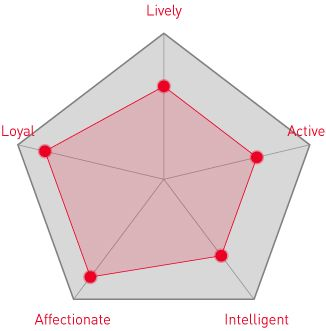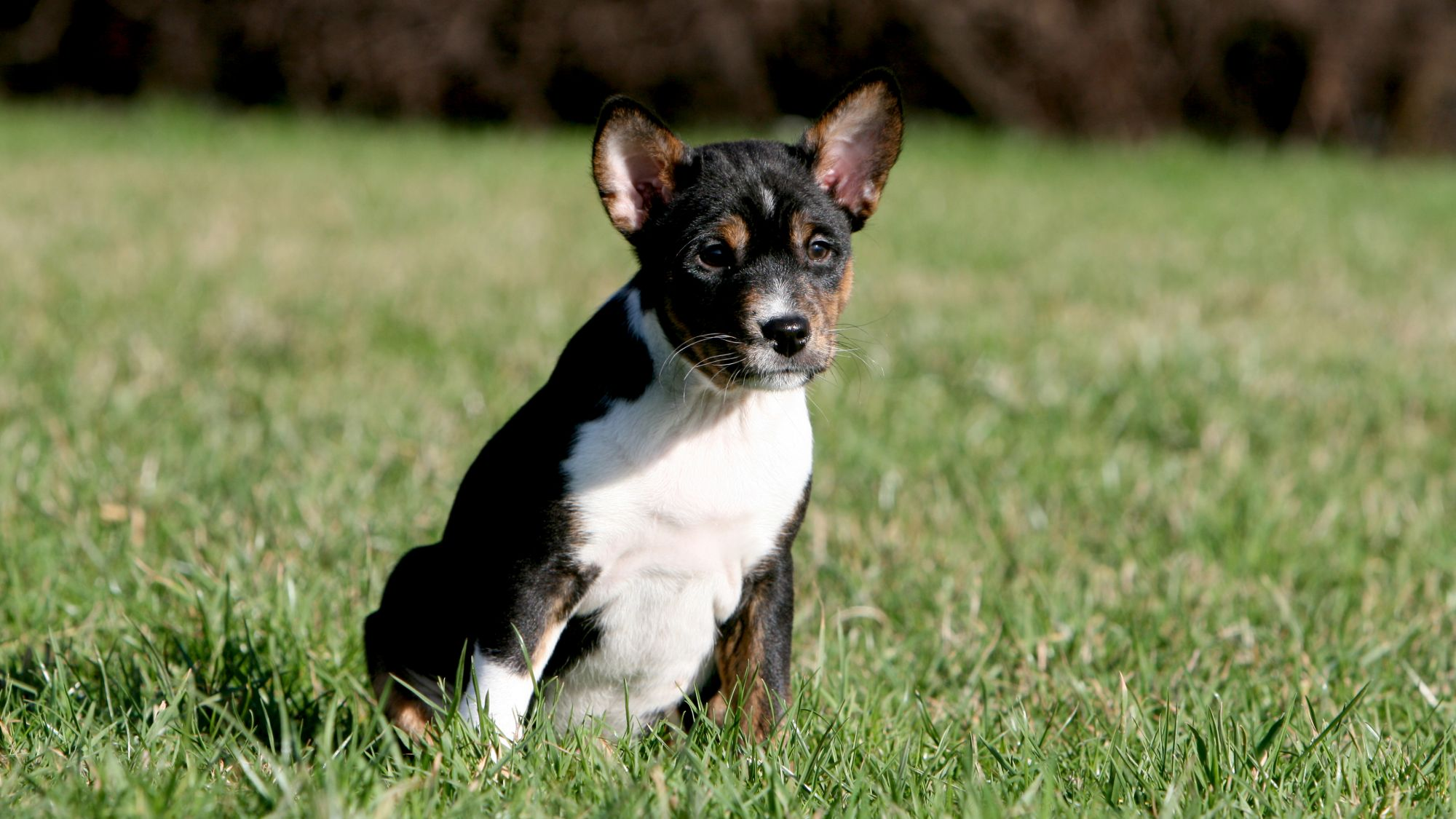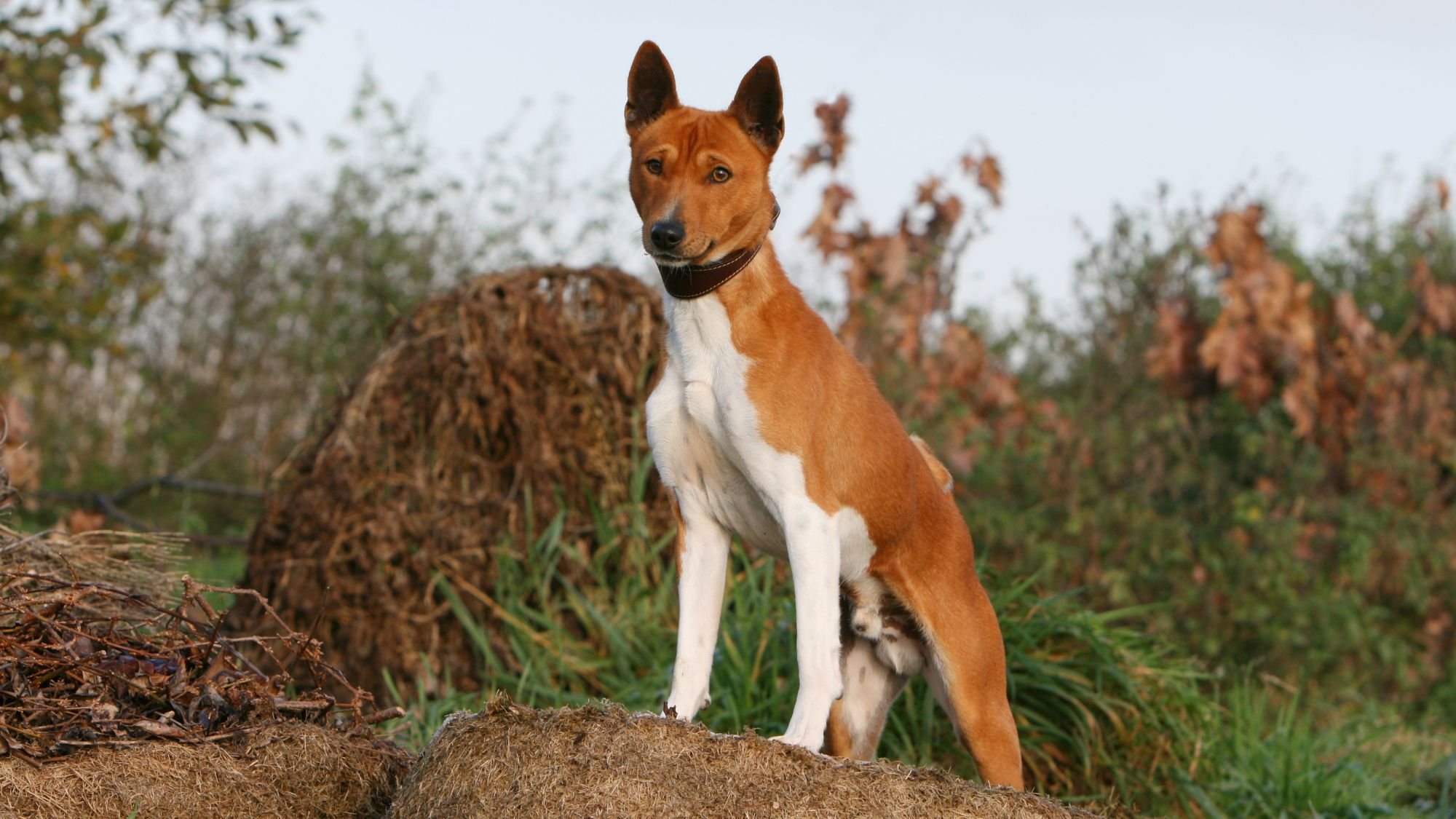

A healthy start to life
Puppyhood is a time of massive physical and behavioural change, and a steep learning curve for new owners. Find out how you can provide your puppy with the best start to life so they develop into strong, healthy dogs.
Learn more
Lifetime of health
Get advice and information on how to provide the best care for your dog at every stage of life.
Learn moreLet's talk Basenjis
Thought to be one of the world’s oldest breeds, the Basenji may not be physically imposing, but what they lack in verticality, they easily make up for in intelligence and pep. One of the smallest members of the hound group, the Basenji is known for their catlike habits and disposition. Though they tend to be independently minded, with early training and socialisation, the expressive and lively Basenji can make a wonderful family pet. Did we mention they can be quite independent?
Official name: Basenji
Origins: Congo

| Drooling tendencies |  |
Warm weather? |  |
| Shedding level |  |
Suited to apartment living? |  |
| Energy Level* | Moderate to High | Family Pet?* |
 |
| Compatibility with other pets |  |
Can stay alone?* |  |
* We advise against leaving pets alone for long stretches. Companionship can prevent emotional distress and destructive behaviour. Speak to your veterinarian for recommendations.
Every pet is different, even within a breed; this snapshot of this breed specifics should be taken as an indication.
For a happy healthy and well-behaved pet, we recommend educating and socializing your pet as well as covering their basic welfare needs (and their social and behavioral needs).
Pets should never be left unsupervised with a child.
Contact your breeder or veterinarian for further advice.
All domestic pets are sociable and prefer company. However, they can be taught to cope with solitude from an early age. Seek the advice of your veterinarian or trainer to help you do this.


| Baby age | Birth to 2 months |
| Puppy age | 2 months to 1 year |
| Adult age | 1 to 7 years |
| Mature age | 7 to 10 years |
| Senior age | From 10 years |

1/7
Get to know the Basenji
All you need to know about the breed
Once a favourite of pharaohs and long prized by African tribes for their hunting skills, Basenjis are small, sleek, fine-boned sighthounds also known as a ‘pariah dogs’, or dogs that hail from a line of non-domesticated medium-sized dogs that live near humans and are used mostly as watchdogs. Basenjis are renowned for their keen eyesight, acute sense of smell… and silence. In fact, the Basenji is even referred to as ‘barkless’, a trait that would no doubt come in handy while scouting prey in tall grasses. However, while Basenjis seldom bark, they do have a vocal repertoire that includes a remarkable yodel, often performed when they’re content. Move over, Switzerland.
But this unique vocal ability isn’t the Basenji’s only impressive trait. They also have a penchant for licking their short, burnished coats squeaky clean - a predilection for personal grooming that has earned them a frequent comparison to cats. And the resemblance doesn’t stop there. While Basenjis are affectionate with, and often quite protective of, their human families, they can be guarded, if not aloof towards strangers. Additionally, the Basenji can be stubborn. Understanding what is being asked of them comes fairly easily to a Basenji - but actually doing it depends on whether or not they see the point.
Bright, inquisitive, and bounding with energy, Basenjis do best when these qualities are channelled through frequent exercise and stimulating activities like canine sports and obedience competitions. For those keen on long play sessions in the garden and on-the-lead walks, the Basenji can make a rewarding companion.

2/7
2 facts about Basenjis
1. It’s a bird, it’s a plane, it’s a Basenji!
It’s not too much of a stretch to say that Basenjis fly – literally. Like some other speedy breeds, Basenjis use a technique called a “double suspension gallop”. While most dogs keep at least one paw on the ground at all times, Basenjis have all four in the air not once, but at two different times when running, allowing them to reach impressive speeds. Good luck catching up!
2. Call me by my name
Basenjis weren’t always Basenjis. When the first attempts were made to import and breed the dogs in England, they were known as African bush dogs or Congo Terriers. Even in their homeland, Basenjis were known by different names including one that translates to “jumping up-and-down dog”, a reference to their vertical jumping ability. It was in 1936 that a certain Ms. Olivia Burn successfully imported the breed and christened them Basenji, an African word meaning “dog of the bush”.
History of the breed
Francis Bacon stated, “Silence is the sleep that nourishes wisdom”. While the Basenji has been around far longer than Mr. Bacon, he could easily have been referring to this ancient breed. The Basenji’s likeness has been found on Ancient Egyptian artifacts as well as in Babylonian and Mesopotamian art, attesting to the breed’s longevity. Might less bark and more observation have something to do with it?
For millennia, the Basenji was prized by African tribes for their meteoric bursts of speed, sharp, long-range eyesight, silence and an evolved sense of smell – qualities that made them ideal for scouting and flushing out prey on hunting expeditions. While the rest of the world sped along, the semi-wild Basenji remained largely unaltered in isolated parts of Africa.
It wasn’t until the late 19th century that the Basenji was introduced to the West, with breeding pairs being imported to England in 1895 and again in 1937. Of these overseas Basenji breeding attempts, only one male survived and was sent to the United States to be paired with a female. Fortunately, this attempt was a success, and the Basenji line was established on American soil. While Basenjis remain rare, they continue to enjoy a loyal fan base.

4/7
From head to tail
Physical characteristics of Basenjis
1. Head
Flat, chiselled head, small, erect ears, and abundant forehead wrinkles
2. Eyes
Almond-shaped, wide-set eyes in dark hazel to dark brown
3. Body
Proportioned body with well sprung ribs and strong hindquarters
4. Coat
Short coat in chestnut red, black, tricolour or brindle with white feet, chest, and tail tip
5. Tail
Upward curling, high-set tail lying on either side

5/7
Things to look out for
From specific breed traits to a general health overview, here are some interesting facts about your Basenji

6/7
Caring for your Basenji
Grooming, training and exercise tips
Since the Basenji is such an effective self-cleaner, their coat only needs a good brush with a soft-bristle brush or swipe of a grooming mit once a week to keep glistening. Do give your Basenji’s nails a regular trim to ensure their comfort when walking or running. Despite having a stubborn streak, Basenjis can learn well when trained with patience and encouragement. Nevertheless, given their high energy and short attention span, it’s best to keep training sessions limited to 10 minutes. Along with training, early socialisation will boost your Basenji’s adaptability to and ease around other animals and humans. Curious and highly active, Basenjis do best with plenty of regular exercise. Long play sessions will keep them busy and help curb any destructive behaviours that boredom might trigger. Because Basenjis have a strong prey drive and can find their way out of most enclosures, they should be kept on the lead when out and about and supervised when in an enclosed space.
7/7
All about Basenjis
Because the Basenji has a larynx shape that prevents them from really producing a bark, they make other sounds to express themselves including whimpering, growling, and of course the famous Basenji yodel. Still, while not mute, the Basenji is not a frequent vocaliser.
Basenjis can do well inside the home provided they get sufficient mental and physical stimulation. When left alone, the Basenji can quickly become bored and resort to chewing things up or searching for an escape hatch. Plenty of play and exercise will produce the best Basenji behaviour.
translations.feature.breeds.otherbreeds
Read more on this topic

How your dog's nutrition needs change with age

How to adopt a dog

Things to consider before getting a dog
Sources
1 - Veterinary Centers of America https://vcahospitals.com/
2 - Royal Canin Dog Encyclopaedia. Ed 2010 and 2020
3 - Banfield Pet Hospital https://www.banfield.com/
4 - Royal Canin BHN Product Book
5 - American Kennel Club https://www.akc.org/


